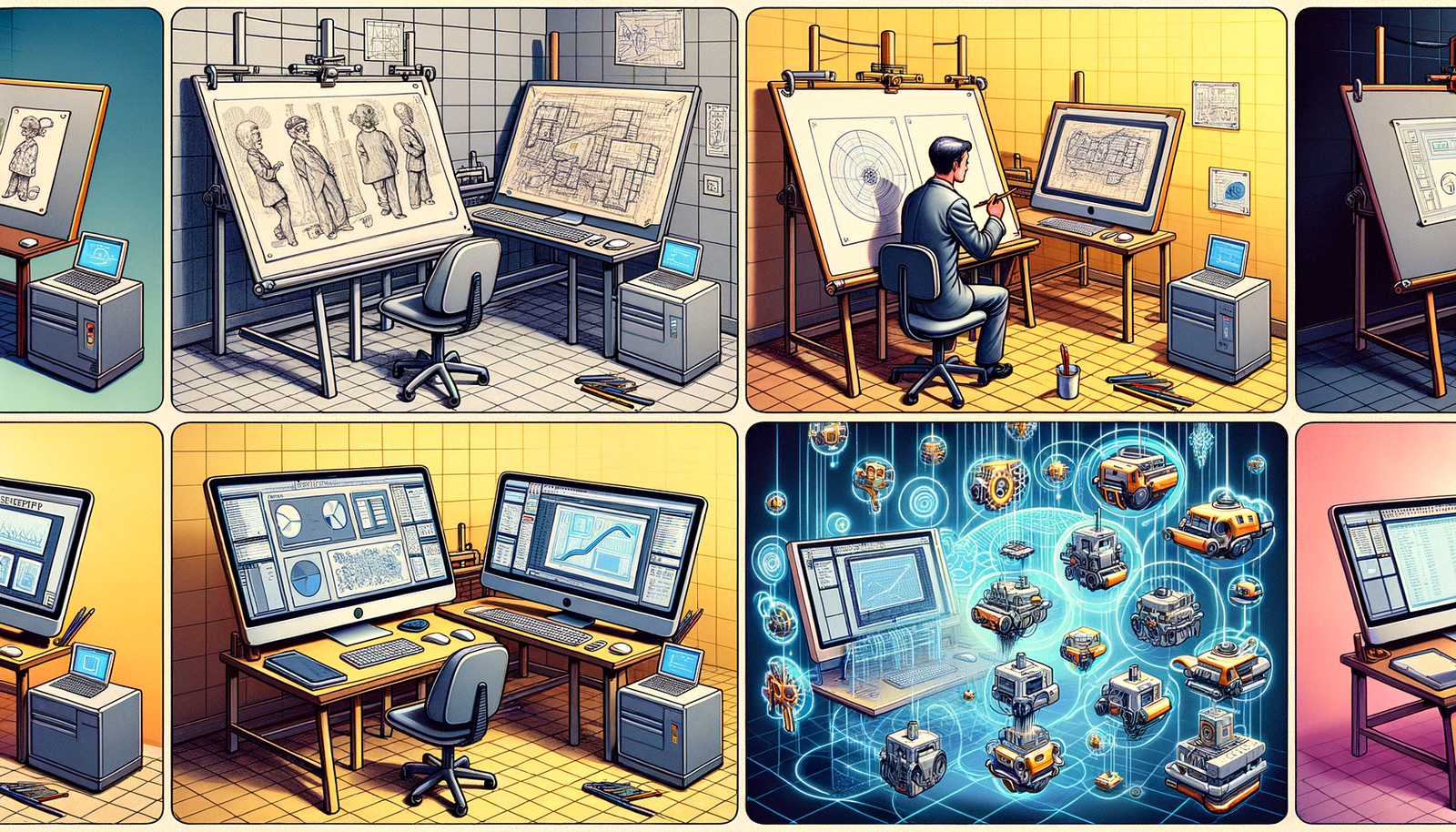Your Cart is Empty
Customer Testimonials
-
"Great customer service. The folks at Novedge were super helpful in navigating a somewhat complicated order including software upgrades and serial numbers in various stages of inactivity. They were friendly and helpful throughout the process.."
Ruben Ruckmark
"Quick & very helpful. We have been using Novedge for years and are very happy with their quick service when we need to make a purchase and excellent support resolving any issues."
Will Woodson
"Scott is the best. He reminds me about subscriptions dates, guides me in the correct direction for updates. He always responds promptly to me. He is literally the reason I continue to work with Novedge and will do so in the future."
Edward Mchugh
"Calvin Lok is “the man”. After my purchase of Sketchup 2021, he called me and provided step-by-step instructions to ease me through difficulties I was having with the setup of my new software."
Mike Borzage
Design Software History: Evolution of ModelCenter: Transforming Design Processes Through Integration and Automation
July 14, 2024 4 min read


Introduction to ModelCenter
ModelCenter is an advanced design software platform developed by Phoenix Integration. It is specifically designed for the purpose of process integration and automation, which are crucial elements in modern engineering and design processes. The primary objectives of ModelCenter are to streamline the workflow between diverse engineering tools and software, enabling efficient multidisciplinary optimization.
The evolution of design software has reached a point where integration across multiple disciplines is not just beneficial but necessary. The historical context leading to the development of ModelCenter includes significant advancements in engineering computation, solid modeling, and the increasing need for efficient design processes. As industries face complex challenges, the shift towards multidisciplinary optimization became evident, paving the way for innovative solutions such as ModelCenter.
The Origins and Development of ModelCenter
Inception and Founding
The creation of ModelCenter can be attributed to Phoenix Integration, a company founded by Scott Woyak and Todd Botteron. Their vision was to develop a software platform that could address the growing demand for integrated and automated design processes in engineering. Both Woyak and Botteron brought their extensive expertise in engineering and software development to the table, leading to the successful inception of ModelCenter.
Early Versions and Features
The initial versions of ModelCenter were designed to cater to a niche user base comprising engineers and designers who required robust process integration capabilities. Early features included:
- Basic process automation tools
- Integration with popular CAD and CAE software
- User-friendly interface for setting up and managing workflows
The core technologies employed in these early versions focused on ensuring compatibility with existing engineering tools while providing a seamless user experience. This laid a strong foundation for future enhancements and broader adoption.
Growth and Evolution
Over the years, ModelCenter underwent significant updates and feature additions that expanded its capabilities and user base. Major milestones in its evolution include:
- Advanced optimization and simulation techniques
- Enhanced integration with a wide range of engineering tools
- Expansion into various industries, including aerospace, automotive, and more
These updates not only improved the software's functionality but also increased its relevance across different sectors. As the demand for efficient and integrated design processes grew, ModelCenter's advanced features made it an indispensable tool in many industries.
Impact on Design Processes and Engineering Computation
Process Integration
One of the most significant contributions of ModelCenter is its ability to integrate various engineering tools and software, providing a cohesive environment for engineers to work in. This integration facilitates seamless communication and data transfer between different software, reducing the likelihood of errors and improving overall efficiency.
Real-world examples of successful process integration include its application in complex engineering projects where multiple software tools are used. ModelCenter ensures that these tools work together harmoniously, streamlining the entire design process.
Automation in Design and Analysis
Automation is a key feature of ModelCenter that significantly reduces design cycle times and improves accuracy. By automating repetitive tasks and complex computations, ModelCenter enables engineers to focus on more critical aspects of the design process. This not only enhances productivity but also leads to better-quality designs.
Case studies demonstrating the impact of automation reveal substantial time savings and increased precision in various engineering projects. The ability to automate complex analysis and simulation tasks is particularly beneficial in industries where precision is paramount.
Optimization and Simulation
ModelCenter supports advanced optimization techniques that allow engineers to explore a wide range of design possibilities and identify the most efficient solutions. This capability is crucial in industries such as aerospace and automotive, where optimization can lead to significant performance improvements and cost savings.
Examples of complex simulations made possible through ModelCenter include aerodynamic simulations, structural analysis, and thermal modeling. These simulations enable engineers to predict and evaluate the performance of their designs under various conditions, leading to more informed decision-making and better outcomes.
The Future of ModelCenter and Process Integration
Current Trends and Innovations
The landscape of design software is continuously evolving, and ModelCenter is at the forefront of these changes. Emerging technologies such as artificial intelligence (AI) and machine learning (ML) are being integrated into ModelCenter to enhance its capabilities further. These technologies have the potential to revolutionize design processes by enabling predictive analytics, intelligent automation, and more.
The role of AI and ML in future updates of ModelCenter includes:
- Enhanced predictive modeling and simulation
- Automated optimization and decision-making
- Improved user experience with intelligent suggestions and assistance
These innovations will help ModelCenter remain a cutting-edge tool in the design software industry.
Challenges and Opportunities
While the future of ModelCenter looks promising, there are potential hurdles that need to be addressed. Challenges include ensuring compatibility with an ever-growing array of engineering tools, meeting the evolving needs of various industries, and maintaining a user-friendly interface amidst increasing complexity.
However, these challenges also present opportunities for growth. Expanding into new markets and industries can provide ModelCenter with a larger user base and drive further innovation. Opportunities for growth include:
- Adoption in emerging industries such as renewable energy and biotechnology
- Collaboration with other software developers to enhance integration capabilities
- Development of new features that cater to specific industry needs
By addressing these challenges and seizing these opportunities, ModelCenter can continue to be a leader in the design software industry.
Conclusion
In summary, ModelCenter has played a pivotal role in the history of design software. Its evolution from a niche tool to a comprehensive platform for process integration and automation has had a significant impact on various industries. The ability to integrate diverse engineering tools, automate complex tasks, and support advanced optimization techniques has made ModelCenter an indispensable tool for engineers and designers.
Looking ahead, the integration of emerging technologies such as AI and ML promises to further enhance ModelCenter's capabilities. While there are challenges to overcome, the opportunities for growth and innovation are substantial. As ModelCenter continues to evolve, it is expected to remain at the forefront of process integration and automation in design software, driving efficiency and innovation in engineering and design processes.
Also in Design News

Cinema 4D Tip: Efficient Lookdev Iteration Using Cinema 4D Picture Viewer History
January 01, 2026 2 min read
Read More
Revit Tip: Standardized Revit Export for Reliable Navisworks Clash Detection
January 01, 2026 2 min read
Read More
V-Ray Tip: VRayOverrideMtl Clay Pass for Accurate Lighting Evaluation
January 01, 2026 2 min read
Read MoreSubscribe
Sign up to get the latest on sales, new releases and more …


